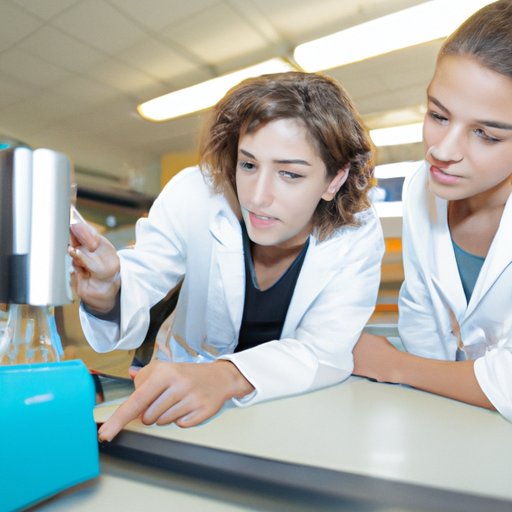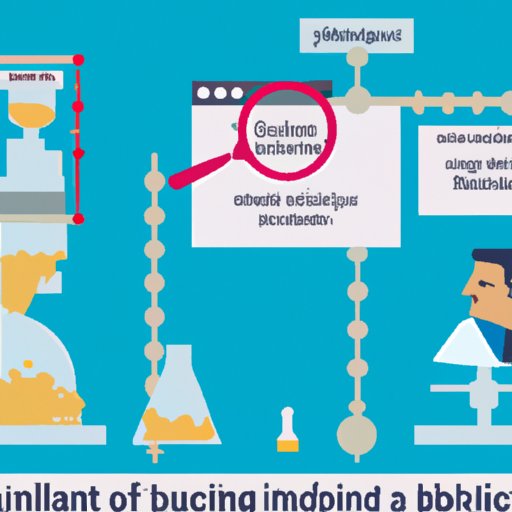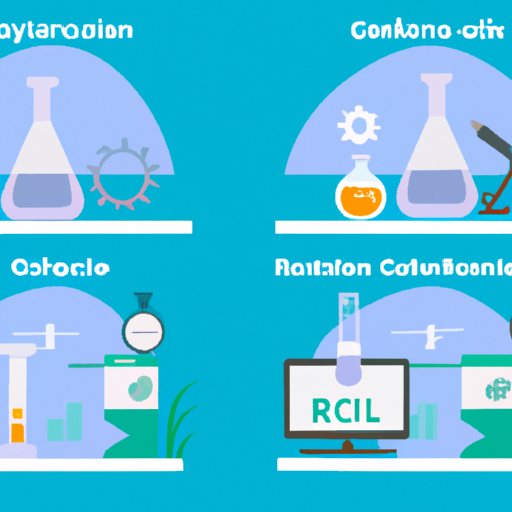Introduction
A reliable science experiment is one that yields consistent, accurate results that can be replicated by other scientists. To achieve this level of reliability, it is essential to consider a number of factors, such as the use of controls, data collection techniques, steps for ensuring accurate results, reducing bias and human error, and replication and validation. By understanding how these elements work together, researchers can design science experiments that are reliable and produce meaningful results.

Examining the Use of Controls in Scientific Experiments
Controls are an essential part of any scientific experiment. As defined by the Royal Society of Chemistry, “a control is an experiment or observation done under normal conditions, without the intentional introduction of a variable.” In other words, a control is a comparison that allows scientists to measure the effect of the experimental variable.
There are two types of controls: positive and negative. Positive controls are used to ensure that the experimental procedure is working properly. They involve introducing a known factor that should produce a certain result. Negative controls are used to compare the results of the experiment with what would happen if the experimental variable were absent. This helps scientists determine the effect of the experimental variable.
Using controls in experiments has several advantages. It allows scientists to identify possible sources of error, such as problems with the experimental setup or contamination of the sample. It also makes it easier to compare results between different experiments, since the control provides a consistent reference point. Finally, using controls helps scientists draw more accurate conclusions from their experiments.

Analyzing the Effectiveness of Data Collection Techniques
Data collection is another important element of reliable science experiments. Data collection involves gathering information about the experiment, such as measurements and observations. This data can then be used to analyze the results of the experiment and draw meaningful conclusions.
There are several different types of data collection techniques. Some common techniques include surveys, interviews, focus groups, and field observations. Each technique has its own advantages and disadvantages, so it is important to choose the right technique for the experiment. For example, surveys are useful for collecting quantitative data, while interviews are better suited for collecting qualitative data.
Using data collection techniques effectively can help improve the reliability of an experiment. By collecting accurate data, scientists can more accurately assess the results of the experiment and draw more meaningful conclusions. Additionally, using data collection techniques can reduce the risk of errors caused by human bias or misinterpretation of results.
Outlining the Steps for Ensuring Accurate Results
In addition to using controls and data collection techniques, there are several steps that scientists can take to ensure accurate results. These steps include establishing clear goals, defining the hypothesis, selecting appropriate materials and equipment, documenting the experiment, and interpreting the results.
Establishing clear goals is essential for any scientific experiment. This helps researchers stay focused on the objectives of the experiment and avoid any unnecessary steps or distractions. Defining the hypothesis is also important, as it helps guide the experiment and provides a framework for analyzing the results.
Selecting the right materials and equipment is also important for obtaining accurate results. The materials and equipment should be chosen based on their suitability for the experiment and their accuracy. Additionally, it is important to document the experiment properly, as this will provide a record of the steps taken and the results obtained.
Finally, it is important to interpret the results accurately. This means reviewing the data, considering alternative explanations, and drawing logical conclusions. By taking these steps, scientists can ensure that they are obtaining reliable results.

Investigating How to Minimize Bias and Human Error in Experiments
Bias and human error are two common sources of unreliability in scientific experiments. Bias can occur when researchers have preconceived notions that influence their interpretation of the results. Human error can occur due to mistakes or misunderstandings during the experiment.
To reduce bias, researchers should strive to remain unbiased throughout the experiment. This means avoiding making assumptions and questioning any preconceived notions. Additionally, researchers should carefully consider all possible explanations for the results before drawing any conclusions.
To reduce human error, researchers should take steps to minimize mistakes and misunderstandings. This includes clearly communicating instructions, double-checking results, and following established protocols. Additionally, researchers should strive to maintain a high level of accuracy in all aspects of the experiment.
Exploring the Role of Replication and Validation in Reliable Science Experiments
Replication and validation are two important components of reliable science experiments. Replication involves repeating the experiment multiple times to verify the results. Validation involves testing the results against other experiments to confirm their accuracy.
Replication is important because it allows researchers to identify any potential sources of error. If the results of the experiment cannot be replicated, then it is likely that there is an error in the experimental setup or the data collection process. Validation is also important because it helps researchers ensure that the results are accurate and meaningful.
By combining replication and validation, researchers can increase the reliability of their experiments. This helps them obtain more accurate results and draw more meaningful conclusions.
Conclusion
Reliable science experiments are essential for obtaining meaningful results. To achieve this level of reliability, researchers must consider a number of factors, such as the use of controls, data collection techniques, steps for ensuring accurate results, reducing bias and human error, and replication and validation. By understanding how these elements work together, researchers can design science experiments that are reliable and produce meaningful results.
(Note: Is this article not meeting your expectations? Do you have knowledge or insights to share? Unlock new opportunities and expand your reach by joining our authors team. Click Registration to join us and share your expertise with our readers.)
